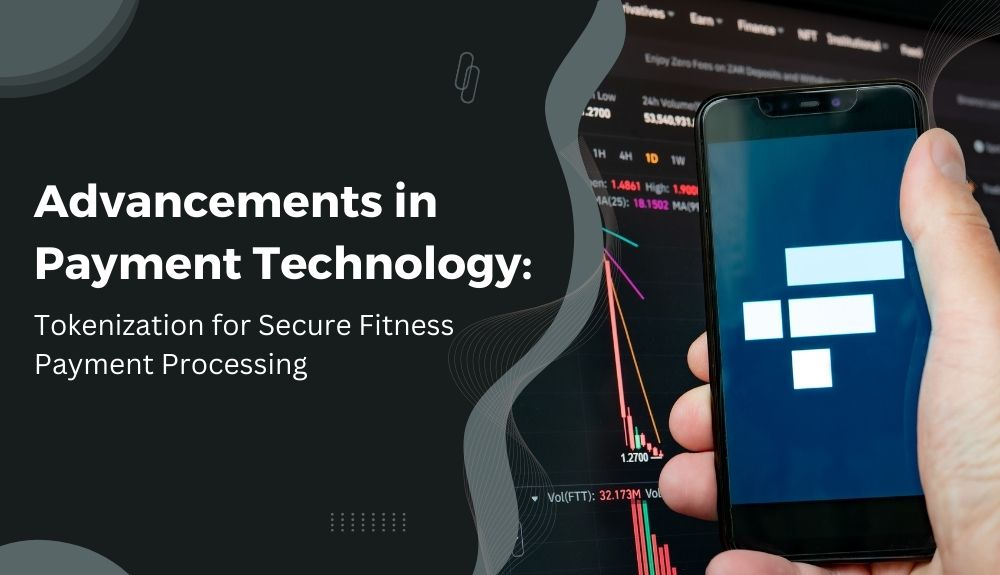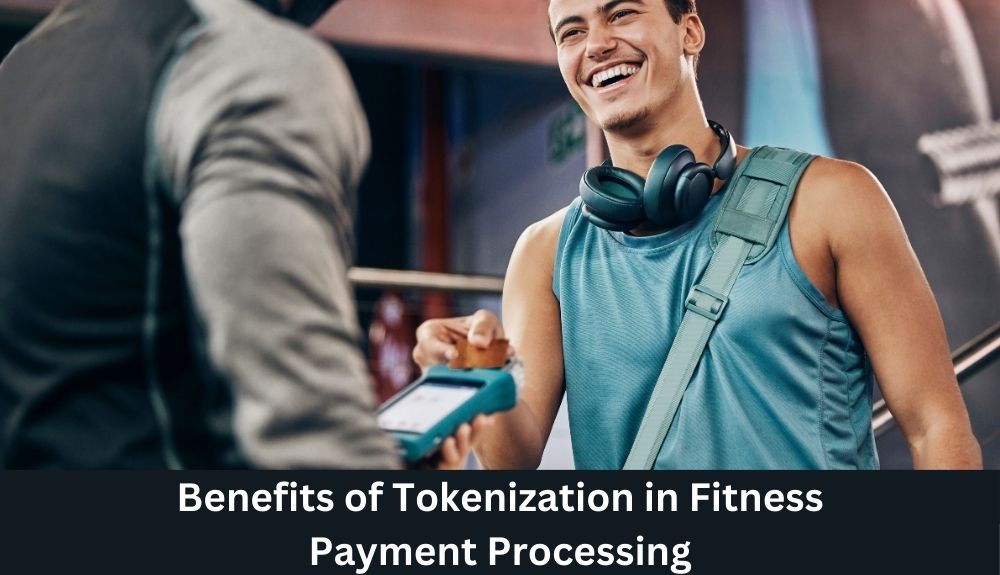
By admin February 21, 2024
Are you tired of worrying about the security of fitness payment processing? Picture this: your gym members seamlessly paying for their memberships without the fear of data breaches or fraud. The solution lies in the advancements of payment technology, specifically tokenization.
In the fitness industry, where sensitive credit card information is exchanged daily, the need for robust security measures is paramount. Tokenization technology offers a game-changing solution by replacing sensitive data with unique tokens, thus ensuring a secure and compliant payment process. But how exactly does tokenization work its magic in fitness payment processing?
This informative article delves deep into the realm of tokenization technology, shedding light on how it revolutionizes security measures in fitness payment systems. Explore the benefits, implementation best practices, and real-world examples of successful tokenization in the fitness industry. Stay ahead of the curve and discover how tokenization is reshaping the landscape of secure fitness payment processing.
Introduction to Tokenization Technology
In the ever-evolving landscape of fitness payment processing, ensuring the security and compliance of sensitive customer information is paramount. One technology that has emerged as a powerful solution is tokenization. Tokenization provides an extra layer of protection by replacing sensitive data, such as credit card numbers, with unique tokens. These tokens are meaningless to potential attackers, making them useless if intercepted.
The concept of tokenization revolves around the generation of a unique token that serves as a stand-in for the original data. This token acts as a reference to the actual data stored securely in a token vault. In fitness payment processing, tokenization prevents the exposure of credit card information, promoting a secure and worry-free experience for both the business and the customer.
By implementing tokenization, fitness businesses can significantly enhance security and compliance. Tokenization helps meet the requirements of the Payment Card Industry Data Security Standard (PCI DSS), reducing the risks associated with data breaches and credit card fraud. It also streamlines the checkout process, as tokens can be used for repeat transactions without the need to store sensitive information.
With tokenization, customer data remains safe, and the potential impact of a data breach is minimized. As the fitness industry strives to provide an effortless digital payment experience, tokenization is becoming an industry standard. By incorporating this technology into fitness payment systems, businesses can enjoy enhanced payment security, reduced compliance complexity, and increased customer trust.
What is Tokenization?
Tokenization is a cutting-edge technology that plays a vital role in enhancing security and compliance in fitness payment processing. By substituting sensitive payment data with unique tokens, tokenization ensures the protection of customer information throughout the payment process. In this section, we will delve into the concept of tokenization, its key principles, and its relevance to the fitness industry.
Understanding Tokenization
Tokenization involves the transformation of sensitive information, such as credit card numbers or bank account details, into non-sensitive tokens that have no inherent value or meaning. These tokens are then used to facilitate transactions securely without exposing the original data.
In tokenization, a token is an algorithmically generated number that replaces the actual data, acting as a surrogate for the sensitive payment information. The relationship between the token and the original data is securely stored in a token vault, ensuring its retrievability when needed.
Key Principles of Tokenization
Tokenization operates on the principle of devaluing sensitive data. It ensures that even if a token is intercepted or compromised, it cannot be reverse-engineered to obtain the original data. Furthermore, tokens are specific to each merchant and transaction, preventing their illicit use elsewhere.
Relevance to Fitness Payment Processing
Tokenization technology is particularly relevant to the fitness industry, where secure payment processing is of utmost importance. As fitness businesses collect and process payment information for memberships, classes, and other services, the need for robust security measures is paramount.
With tokenization, fitness businesses can eliminate the need to store sensitive payment data locally, drastically reducing the risk of data breaches. Instead, tokens are used during the payment process, safeguarding customer data and providing peace of mind for both businesses and their customers.
By implementing tokenization in fitness payment systems, businesses can enhance security, achieve Payment Card Industry (PCI) compliance, and improve the overall customer experience. Customers can enjoy more seamless and secure checkout processes, eliminating concerns about their sensitive information falling into the wrong hands.
In the next section, we will explore the benefits of tokenization in fitness payment processing in greater detail, highlighting the advantages it brings to the industry.
Benefits of Tokenization in Fitness Payment Processing

Tokenization technology offers numerous benefits for the fitness industry, enhancing security, ensuring PCI compliance, and improving the overall customer experience. Here are some of the key advantages of implementing tokenization in fitness payment processing:
1. Increased Security Measures
Tokenization provides a robust layer of security by replacing sensitive payment information with unique tokens. Unlike traditional payment processing methods, which store actual credit card numbers or bank account information, tokenization replaces them with randomly generated tokens. This means that in the event of a data breach, the tokenized data is useless to potential hackers.
2. Simplified PCI Compliance
Maintaining Payment Card Industry Data Security Standard (PCI DSS) compliance is crucial for fitness businesses that handle payments. Tokenization technology helps simplify the compliance process by reducing the scope of sensitive data stored within the business’s systems. As sensitive payment information is replaced with tokens, the business’s exposure to potential breaches and compliance burdens is significantly reduced.
3. Enhanced Customer Experience
Tokenization technology contributes to a seamless and hassle-free payment experience for customers. By eliminating the need to provide sensitive payment information repeatedly, customers can enjoy a quicker and more efficient checkout process. This not only improves customer satisfaction but also encourages repeat business and boosts loyalty.
4. Mobile Wallet Integration
As mobile payments become increasingly popular, fitness businesses can leverage tokenization to integrate with mobile wallet platforms such as Apple Pay and Android Pay. This widens the range of payment options available to customers and creates a more convenient and versatile payment experience.
5. Fraud Prevention
Tokenization acts as a powerful tool in preventing credit card fraud and unauthorized use. The unique tokens generated by tokenization technology are meaningless outside the specific transaction context. This makes it extremely difficult for criminals to steal and misuse sensitive payment information, providing an extra layer of protection for both businesses and customers.
6. Industry Standard and Best Practice
Tokenization has emerged as an industry standard for secure payment processing in various sectors, including fitness. By adopting tokenization technology, fitness businesses can demonstrate their commitment to providing a secure payment environment for their customers. This not only builds trust with customers but also positions the business as a leader in implementing best practices for data security.
In conclusion, implementing tokenization technology in fitness payment processing offers significant benefits, including increased security, simplified PCI compliance, improved customer experience, mobile wallet integration, fraud prevention, and adherence to industry standards. By embracing tokenization, fitness businesses can enhance security measures and deliver a seamless payment experience that instills confidence in their customers.
Implementing Tokenization in Fitness Payment Systems
Implementing tokenization in fitness payment systems is a crucial step towards enhancing security and compliance. By following best practices and considering important factors, fitness businesses can successfully integrate this technology into their payment infrastructure.
Understanding Tokenization
Tokenization is a process that replaces sensitive information, such as credit card numbers, with unique tokens. These tokens act as substitutes for the original data, ensuring that sensitive data is not stored or transmitted in its raw form. The tokenized data is useless to unauthorized parties, providing an additional layer of security.
Best Practices for Implementation
When implementing tokenization in fitness payment systems, there are several best practices to consider:
1. Choose a Trusted Tokenization Solution: Select a tokenization service provider that has a proven track record and adheres to industry standards, such as PCI DSS (Payment Card Industry Data Security Standard).
2. Scope and Segmentation: Determine the scope of tokenization implementation and identify the specific data elements that need to be tokenized. Segmentation ensures that only the necessary data is tokenized, reducing complexity and minimizing the impact on existing systems.
3. Integration with Existing Infrastructure: Assess the compatibility of the tokenization solution with your current payment systems. Ensure seamless integration by working closely with your payment service provider or IT team.
4. Educate Staff and Customers: Train your employees on how to handle tokenized data, emphasizing the importance of security measures. Educate your customers about the benefits of tokenization for their payment security, instilling trust and confidence in your business.
5. Continuous Monitoring and Updates: Regularly monitor your tokenization system to identify any vulnerabilities or gaps in security. Stay up to date with the latest developments and security patches to keep your payment systems secure.
Considerations for Implementation
In addition to best practices, consider the following factors during the implementation process:
1. Compliance Requirements: Ensure that your tokenization solution meets the compliance requirements set by relevant regulatory bodies, such as the PCI Security Standards Council.
2. Integration with Existing Software: Evaluate whether your existing fitness management software can be seamlessly integrated with the tokenization technology. This ensures a smooth and efficient payment process for both your staff and customers.
3. Fraud Prevention Measures: Tokenization not only enhances security but also provides effective fraud prevention capabilities. Consider implementing additional measures, such as real-time transaction monitoring and advanced fraud detection systems, to strengthen your overall security posture.
4. Scalability and Future-Proofing: Choose a tokenization solution that can accommodate the growing needs of your fitness business. Consider future trends and innovations in tokenization technology to ensure that your payment systems remain secure and up to date.
Remember, implementing tokenization in fitness payment systems requires careful planning and consideration. By following best practices and keeping these considerations in mind, you can significantly enhance the security and compliance of your payment process within the fitness industry.
Addressing Security Concerns and Ensuring Compliance
In the ever-evolving landscape of payment technology, security and compliance are paramount concerns for fitness businesses that process payments. With the implementation of tokenization technology, these concerns can be effectively addressed, ensuring the protection of sensitive customer information and adherence to industry regulations.
The Importance of Security in Fitness Payment Processing
Security breaches and data theft pose significant risks to fitness businesses, potentially compromising the financial information of their customers. Recent years have witnessed a surge in data breaches, making it crucial for fitness businesses to implement robust security measures. Tokenization plays a pivotal role in bolstering payment security.
How Tokenization Mitigates Security Risks
Tokenization replaces sensitive payment information, such as credit card numbers or bank account details, with unique tokens. These tokens are randomly generated and have no intrinsic value, rendering them useless to cybercriminals. Even in the event of a data breach, the stolen tokens are rendered useless, safeguarding customer data.
By implementing tokenization, fitness businesses can minimize the risk of credit card fraud, enhance customer trust, and protect their reputation. Tokenization serves as a fundamental security layer, ensuring that customer data remains secure throughout the payment process.
Achieving Compliance with Tokenization
In addition to enhancing security, tokenization is a valuable tool for achieving and maintaining compliance with industry regulations, particularly the Payment Card Industry Data Security Standard (PCI DSS). PCI DSS requires businesses that handle cardholder data to meet stringent security requirements, and tokenization can facilitate compliance.
Tokenization removes sensitive credit card data from the fitness business’s systems, reducing their PCI DSS scope. When properly implemented, tokenization can simplify the compliance process and lessen the burden of maintaining rigorous security measures.
Choosing a Tokenization Solution
When considering tokenization for fitness payment processing, it is important to choose a reputable and reliable tokenization solution. The chosen solution should align with industry standards and be certified by the major payment card networks. It should also integrate seamlessly with existing payment systems and provide a secure token vault for storing and managing tokens.
Fitness businesses must also assess their specific compliance requirements and ensure that the chosen tokenization solution meets these standards. By carefully selecting a tokenization solution, fitness businesses can address security concerns, achieve compliance, and provide their customers with a secure and seamless payment experience.
Conclusion
Tokenization technology offers concrete solutions to address security concerns and ensure compliance in fitness payment processing. By leveraging tokenization, fitness businesses can effectively protect sensitive customer data, mitigate the risks of data breaches, and enhance overall payment security. Additionally, tokenization simplifies the compliance process, enabling businesses to meet stringent industry standards such as PCI DSS. By prioritizing security and compliance through tokenization, fitness businesses can build trust with their customers and safeguard their reputation in today’s digital age.
Future Trends and Innovations in Tokenization Technology

As the fitness industry continues to evolve, so does the technology that supports secure payment processing. Tokenization technology, already playing a crucial role in enhancing security and compliance, is poised to undergo exciting advancements in the future. Here are some emerging trends and innovations in tokenization technology that may have a significant impact on the fitness industry.
1. Mobile Wallet Integration
With the increasing popularity of mobile payments, integrating tokenization technology with mobile wallet platforms like Apple Pay and Android Pay is gaining momentum. This integration allows fitness businesses to offer their customers an effortless digital payment experience while ensuring the security of sensitive payment information.
2. Network Tokenization
Network tokenization is another trend to watch in the tokenization landscape. This technology replaces sensitive credit card data with unique tokens that are specific to a particular network or payment ecosystem. By shifting the burden of data protection to the network, fitness businesses can mitigate the risk of data breaches and reduce their compliance efforts.
3. Enhanced Payment Seamlessness
Tokenization’s end game is to create a super-buzzy payment experience that is both secure and seamless. Innovations in tokenization technology aim to make the payment process even more effortless, enabling fitness enthusiasts to make transactions quickly and conveniently. These enhancements include faster tokenized payment transactions and improved integration with fitness management software.
4. Artificial Intelligence and Machine Learning
The application of Artificial Intelligence (AI) and Machine Learning (ML) in tokenization technology could further enhance its capabilities. By analyzing patterns and behaviors, AI and ML algorithms can identify and prevent fraudulent activities, ensuring the security of customer data. Fitness businesses leveraging these advancements can benefit from increased fraud prevention and improved customer trust.
5. End-to-end Data Protection
Tokenization technology is evolving to provide end-to-end data protection across the entire payment process. From the moment a customer initiates a transaction to the point of settlement, tokenized payment data remains secure. This comprehensive approach ensures that sensitive card payment information is safeguarded at every stage, reinforcing customer confidence in the fitness payment process.
The future of tokenization technology in the fitness industry looks promising, with advancements focused on mobile wallet integration, network tokenization, enhanced payment seamlessness, AI and ML integration, and end-to-end data protection. Fitness businesses that embrace these trends and innovations can stay ahead of the curve, providing their customers with secure and convenient payment experiences while maintaining compliance with industry standards. As the digital age continues to transform the way we do business, tokenization technology will remain a crucial component of secure and compliant fitness payment processing.
Remember, tokenization technology is constantly evolving, and staying updated on the latest trends and innovations will be key for fitness businesses looking to maximize the benefits of this groundbreaking technology.
Conclusion
In conclusion, tokenization technology offers significant advantages for enhancing security and compliance in fitness payment processing. By replacing sensitive payment information such as credit card numbers with unique tokens, businesses can minimize the risk of data breaches and mitigate fraud attempts.
The benefits of tokenization go beyond security. Tokenization helps businesses achieve PCI compliance by reducing the scope of sensitive data storage and transmission. This not only protects customer information but also saves time and effort in meeting regulatory requirements.
Furthermore, tokenization enhances the customer experience by enabling seamless and effortless digital payments. It eliminates the need for customers to provide their sensitive payment details repeatedly, promoting convenience and trust in the payment process.
As we move forward in today’s digital age, tokenization continues to evolve and innovate. Emerging trends such as network tokenization and integration with mobile wallets like Apple Pay and Android Pay further strengthen its position as an industry standard.
To implement tokenization effectively, businesses should follow best practices and ensure proper integration with their existing fitness management software. By doing so, they can build a robust payment infrastructure that prioritizes security and reliability.
In summary, tokenization is the core of secure fitness payment processing. Its ability to protect sensitive payment information, enhance compliance, and streamline the payment experience makes it an essential tool for fitness businesses in today’s financial landscape.